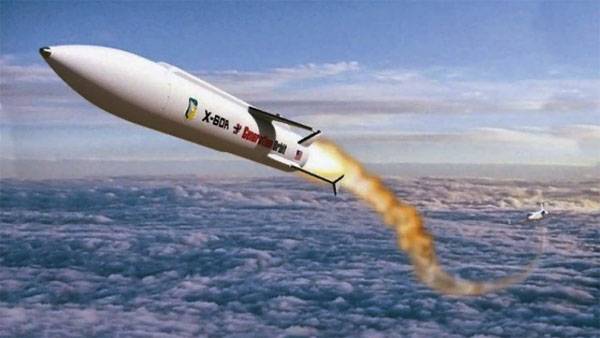Hypersonic X-60A GO1 rocket in the USA is being prepared for flight tests

US Air Force spokesman Daryl Meier quotes Jane's US portal:
Tests are conducted at the Cesil test site (Florida). An important detail is noted: tests are being conducted at the test site, which is operated by the Federal aviation US Administration (FAA), not the Pentagon. According to Mayer, this primarily emphasizes the commercial focus of the project and helps to reduce the number of "intersections" in testing other systems to which the Pentagon has a solution.
It is noted that two flight tests of the X-60A will be conducted in the 2020 year. At the same time, the rocket’s customer is not satisfied with its speed indicators.
It is known that the X-60A rocket is equipped with Ursa Major Technologies “Hadley” single-stage liquid-propellant rocket engines. Liquid oxygen and aviation kerosene are used as working media. This engine so far allows a speed of slightly more than 5 M to be developed. The rocket itself is launched from the Gulfstream III carrier. Earlier it was noted that the system is capable of speeding up in 8 M, however, at the moment this information has not been confirmed.
Customers GOLauncher1 declare that their project can be used purely for scientific purposes. For example, with its help it is planned to investigate microgravity in orbit, to study astrophysical processes.
It is stated that the device being created should launch nanosatellites into orbit - literally hundreds. The total “nanosatellite” load will be by mass up to 450 kg. The mass of the carrier itself is 1,1 t. To increase the speed parameters of the system, the bar of the maximum payload is planned to be lowered.
Information